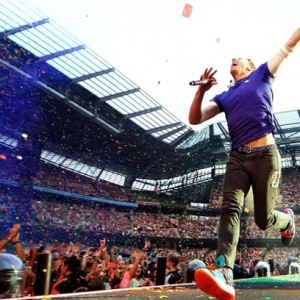Cillian Murphy and the Art of Transformation: Physical and Emotional Changes for Every Role
Cillian Murphy is not just an actor; he is a chameleon of the silver screen. With every role, he dives deep into a transformative process that leaves audiences spellbound and critics in awe. From haunting performances in gripping dramas to riveting portrayals in high-octane blockbusters, Murphy’s ability to metamorphose both physically and emotionally for his characters has solidified his status as one of Hollywood’s most revered talents. Let’s take a closer look at how this Irish powerhouse has redefined the concept of transformation in acting.
The Method Behind the Madness
Murphy’s journey into the mesmerizing world of character immersion goes beyond just learning lines. His approach is deeply rooted in the method acting technique, which emphasizes emotional authenticity and psychological realism. For him, becoming a character is not merely a pastime; it's a commitment that requires rigorous preparation and an almost spiritual connection to the role.
For example, in his recent performance as J. Robert Oppenheimer in Christopher Nolan's highly anticipated film "Oppenheimer," Murphy underwent a stunning physical metamorphosis. The role demanded not only the historical accuracy of portraying the father of the atomic bomb but also a psychological dive into the mind of a man wrestling with his own moral dilemmas. To embody this complex figure, he adopted an extreme diet and fitness routine that helped him shed weight and alter his physical appearance, showcasing his dedication to the authenticity of his portrayal.
Physical Transformations: A Feast for the Eyes
Who can forget Murphy’s stunning transformation into the brooding Tommy Shelby in the hit series "Peaky Blinders"? With slicked-back hair, tailored suits, and his unforgettable razor blade cap, Murphy literally transformed into the iconic character who is both charming and menacing. This look was not just about fashion; it was an integral part of conveying Tommy’s gritty essence. His ability to mold his physical presence to fit the persona speaks volumes about his artistry.
Moreover, in the psychological thriller "Dunkirk," Murphy played a soldier grappling with fear and survival amid World War II chaos. The physical toll of war was palpable in his portrayal. His slim frame and sunken eyes effectively communicated the trauma experienced by a soldier fighting for his life. It's this kind of physical storytelling that elevates Murphy’s performances beyond mere acting; he becomes a vessel through which audiences can feel the intensity of the narrative.
Emotional Depth: The Heart of Transformation
Beyond physical appearances, Cillian Murphy’s emotional depth is where his true artistry shines. He has an uncanny ability to convey nuanced feelings that resonate with viewers. His commitment to understanding the psyche of his characters means that he doesn’t just act; he lives and breathes them.
In "A Quiet Place Part II," Murphy plays Emmett, a character burdened by loss and despair. His raw emotional display encapsulated the depths of human grief amidst a post-apocalyptic world. Each glance, each silence, spoke volumes about his internal struggle, demonstrating that transformation isn’t solely about what you see; it’s also about what you feel. Eye contact, posture, and silence—Murphy has mastered the art of communication without words.
The Risks and Rewards of Transformation
Engaging in such profound transformations comes with its own set of challenges. The pressure to deliver a compelling performance can take a toll on an actor's mental and emotional state. Murphy notes that fully immersing himself into a character can sometimes lead to “mental exhaustion.” It’s a double-edged sword; while it lends authenticity to his roles, it also demands a high personal cost. He navigates this perfectly by balancing these extremes, often taking time to recalibrate between gigs.
Murphy is also well aware of the impact of his roles on audiences. In a world craving authenticity and relatability, his commitment to transformation offers a refreshing departure from traditional acting. His performances resonate, spark conversation, and encourage viewers to reflect on critical societal issues—whether it be war, loss, or ethical dilemmas in science.
Conclusion: A Masterclass in Transformation
As Cillian Murphy continues to grace our screens with his remarkable portrayals, he teaches us that transformation goes beyond mere physical changes; it’s about exploring the deeper psychological intricacies of the human experience. His dedication to every character serves as an inspiration for actors and fans alike.
Whether it's the charismatic leader in "Peaky Blinders" or the troubled genius in "Oppenheimer," Murphy's work is a testament to the art of transformation and storytelling. Each role serves as a masterclass, reminding us of the beauty and complexity of the human condition. For fans and newcomers alike, watching Murphy’s journey of transformation is not just entertainment; it’s an experience that lingers long after the credits roll.
Stay tuned for what Cillian Murphy will bring to the big screen next. If his past transformations are any indication, we’re in for a mesmerizing ride.

